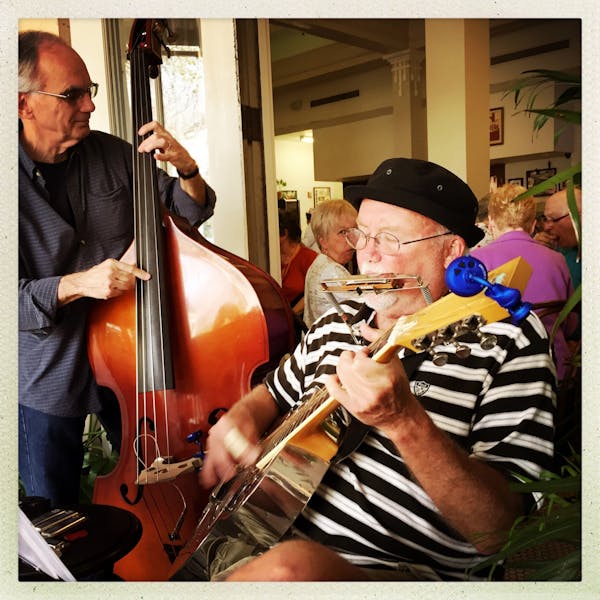The hotel concierge glared at me. There was no mistaking her scolding.
"There is no disaster tour," she scoffed at my inquiry. "It's a city tour now. The city has revived. That was 10 years ago!"
True, the number of tour buses that once rolled through the neighborhoods hardest hit by Hurricane Katrina have declined in recent years. But after all this time, it is still easy to find remnants of the destruction, and a few tours take curious travelers to see them.
I hopped aboard a three-hour Gray Line bus tour that pointed out storm memorials, flood walls and neighborhoods dotted with empty residential lots and boarded-up houses (cost is $49). The small bus passed a school with trailers still being used as classrooms, houses still spray-painted with giant X's — the markings used by rescuers looking for survivors in the weeks after the storm. Our guide pointed out a house with a hole in its rooftop, chopped from the inside by its residents to escape rising water.
Late in the tour, the bus cruised through the Lower Ninth Ward, where floodwater washed modest homes completely off their foundations. Actor Brad Pitt's Make It Right organization has now built more than 100 modern, energy-efficient houses there, with solar panels glinting in the sun. Some are still surrounded by vast stretches of empty land where a neighborhood once stood.
The disaster tours have been criticized for capitalizing on hardship, leading well-heeled, slack-jawed tourists to gawk at the locals.
Our tour guide defended it: "If it wasn't for tours, people wouldn't know to volunteer here," he said.
For tourists who are not apt to venture beyond the comforts of the well-known attractions, the guided bus tour was a good reminder that some parts of the city are still struggling to recover. In many of the areas that have recovered, gentrification has made living less affordable.
For tourists who don't want to spend an entire afternoon on a bus, the Louisiana State Museum on Jackson Square features a captivating exhibit detailing what happened before, during and after Katrina.
"Living with Hurricanes: Katrina and Beyond" is well worth the $6 price of admission. With news footage, interactive screens and models, it shows visitors the "elements behind the catastrophe" — both the destructive natural forces and the human error that swamped the city.
"It's part of our history," said one French Quarter tour salesman, explaining why he didn't shy away from talking about Katrina. "We appreciate everybody like you coming to New Orleans and spending money. That's how we came back."
Pam Louwagie • 612-673-7102

Photographer alleges he was forced to watch Megan Thee Stallion have sex and was unfairly fired
Phish fans are famously dedicated. What happens when they enter the Sphere?
Minneapolis will bid to host Sundance Film Festival

Icehouse on Eat Street in Mpls. facing eviction for unpaid rent

